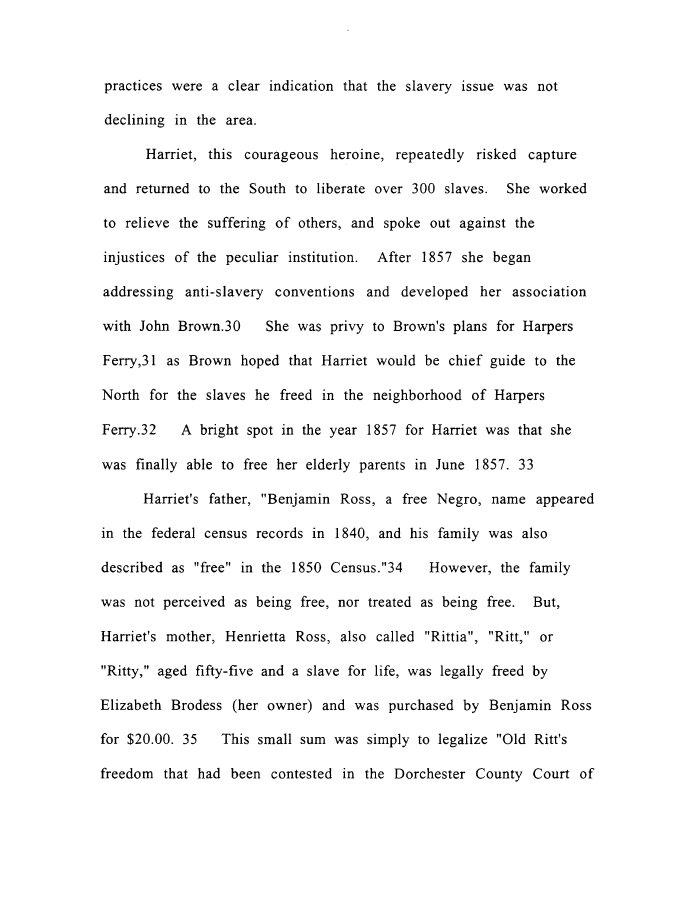 |
||||
|
TASK FORCE TO STUDY THE HISTORY AND LEGACY OF SLAVERY IN MARYLAND (Final Report) 1999/12/31 MdHR 991422 MdHR 991422, Image No: 324 Print image (40K) |
 |
||||
|
TASK FORCE TO STUDY THE HISTORY AND LEGACY OF SLAVERY IN MARYLAND (Final Report) 1999/12/31 MdHR 991422 MdHR 991422, Image No: 324 Print image (40K) |
| practices were a clear indication that the slavery issue was not declining in the area. Harriet, this courageous heroine, repeatedly risked capture and returned to the South to liberate over 300 slaves. She worked to relieve the suffering of others, and spoke out against the injustices of the peculiar institution. After 1857 she began addressing anti-slavery conventions and developed her association with John Brown.30 She was privy to Brown's plans for Harpers Ferry,31 as Brown hoped that Harriet would be chief guide to the North for the slaves he freed in the neighborhood of Harpers Ferry.32 A bright spot in the year 1857 for Harriet was that she was finally able to free her elderly parents in June 1857. 33 Harriet's father, "Benjamin Ross, a free Negro, name appeared in the federal census records in 1840, and his family was also described as "free" in the 1850 Census."34 However, the family was not perceived as being free, nor treated as being free. But, Harriet's mother, Henrietta Ross, also called "Rittia", "Ritt," or "Ritty," aged fifty-five and a slave for life, was legally freed by Elizabeth Brodess (her owner) and was purchased by Benjamin Ross for $20.00. 35 This small sum was simply to legalize "Old Ritt's freedom that had been contested in the Dorchester County Court of |